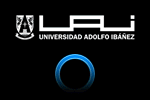> Context • The 4E approach proposes an alternative framework to understanding cognition and learning. However, its application to the study of creativity from new educational approaches such as STEAM is incipient. > Problem • How can the 4E approach that fosters creativity be implemented in STEAM education, through participation in technology-mediated learning ecosystems? > Method • Through face-to-face ethnographic participant observation, we observe students engaging in creative activities suggested by our theoretical approach. We use these observations to illustrate our theoretical approach. > Results • Our examples show the many possibilities to encourage creativity by participating in STEAM educational environments that promote design and prototyping with technologies. We highlight collaborative work, disciplinary integration and learning by doing, characteristics of the STEAM approach, which favor the implementation of the 4E approach. > Implications • The STEAM approach encourages creativity and learning that gives primacy to training processes over final products, so it is consistent with the 4E approach. > Constructivist content • We adhere to the 4E approach to cognition: embodied, enacted, embedded and extended.


